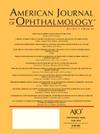Suprachoroidal drug delivery for VEGF suppression in wet AMD and other diseases with choroidal neovascularization.
IF 4.1
1区 医学
Q1 OPHTHALMOLOGY
引用次数: 0
Abstract
PURPOSE Choroidal neovascularization caused by age-related macular degeneration, among other diseases, causes significant visual impairment. Intravitreal therapeutics inhibiting vascular endothelial growth factor (VEGF) signaling have shown excellent safety and efficacy in regressing choroidal neovascularization and improving vision. Current FDA-approved treatments deliver these drugs into the vitreous cavity, even though choroidal neovascularization originates from aberrant signaling in the choroid. DESIGN Systematic review METHODS: A literature search was conducted across PubMed and Google Scholar from inception up to December 31, 2024, focusing on studies investigating suprachoroidal delivery of anti-VEGF therapy. Randomized controlled trials, cohort studies, and case-control studies were included, while case reports and review articles were excluded. RESULTS Fifteen peer-reviewed articles, 3 press releases, 6 conference abstracts and presentations, and 8 clinical trials were identified that relevant to the topic of suprachoroidal delivery of anti-VEGF therapy. CONCLUSION The suprachoroidal space is a potential space between the sclera and the choroid, which has recently become a route of delivery in an FDA-approved treatment. Notably, suprachoroidal delivery results in higher choroidal drug concentrations than intravitreal delivery. Promising results thus far have been seen with suprachoroidal delivery of VEGF-targeting therapies in clinical and pre-clinical studies; future work is needed to more-fully demonstrate safety and efficacy.脉络膜上药物递送用于湿性AMD和其他脉络膜新生疾病的VEGF抑制。
目的:老年性黄斑变性引起的脉络膜新生血管形成,与其他疾病一样,会导致严重的视力损害。玻璃体内抑制血管内皮生长因子(VEGF)信号的治疗在恢复脉络膜新生血管和改善视力方面显示出良好的安全性和有效性。目前fda批准的治疗方法是将这些药物注入玻璃体腔,尽管脉络膜新生血管起源于脉络膜中的异常信号。方法:检索PubMed和谷歌Scholar从成立到2024年12月31日的文献,重点研究脉络膜上给药抗vegf治疗的研究。纳入随机对照试验、队列研究和病例对照研究,排除病例报告和综述文章。结果15篇同行评议文章、3篇新闻稿、6篇会议摘要和报告,以及8项临床试验均与脉络膜上给药抗vegf治疗相关。结论脉络膜上间隙是巩膜和脉络膜之间的一个潜在间隙,最近在fda批准的治疗中已成为一种输送途径。值得注意的是,脉络膜上给药导致脉络膜药物浓度高于玻璃体内给药。到目前为止,在临床和临床前研究中,脉络膜上给药vegf靶向治疗已经取得了可喜的结果;未来的工作需要更充分地证明安全性和有效性。
本文章由计算机程序翻译,如有差异,请以英文原文为准。
求助全文
约1分钟内获得全文
求助全文
来源期刊
CiteScore
9.20
自引率
7.10%
发文量
406
审稿时长
36 days
期刊介绍:
The American Journal of Ophthalmology is a peer-reviewed, scientific publication that welcomes the submission of original, previously unpublished manuscripts directed to ophthalmologists and visual science specialists describing clinical investigations, clinical observations, and clinically relevant laboratory investigations. Published monthly since 1884, the full text of the American Journal of Ophthalmology and supplementary material are also presented online at www.AJO.com and on ScienceDirect.
The American Journal of Ophthalmology publishes Full-Length Articles, Perspectives, Editorials, Correspondences, Books Reports and Announcements. Brief Reports and Case Reports are no longer published. We recommend submitting Brief Reports and Case Reports to our companion publication, the American Journal of Ophthalmology Case Reports.
Manuscripts are accepted with the understanding that they have not been and will not be published elsewhere substantially in any format, and that there are no ethical problems with the content or data collection. Authors may be requested to produce the data upon which the manuscript is based and to answer expeditiously any questions about the manuscript or its authors.

 求助内容:
求助内容: 应助结果提醒方式:
应助结果提醒方式:


